From Richard Corrigan to Sat Bains and Amy Poon – meet the mums behind the chefs and their favourite Mother’s Day recipes
They taught them how to peel spuds, stir pots of love (and spinach) and quietly ran the show behind the scenes. Ahead of Mother’s Day, Hannah Twiggs talks to some of the country’s best-known culinary stars and meets the real head chef: Mum

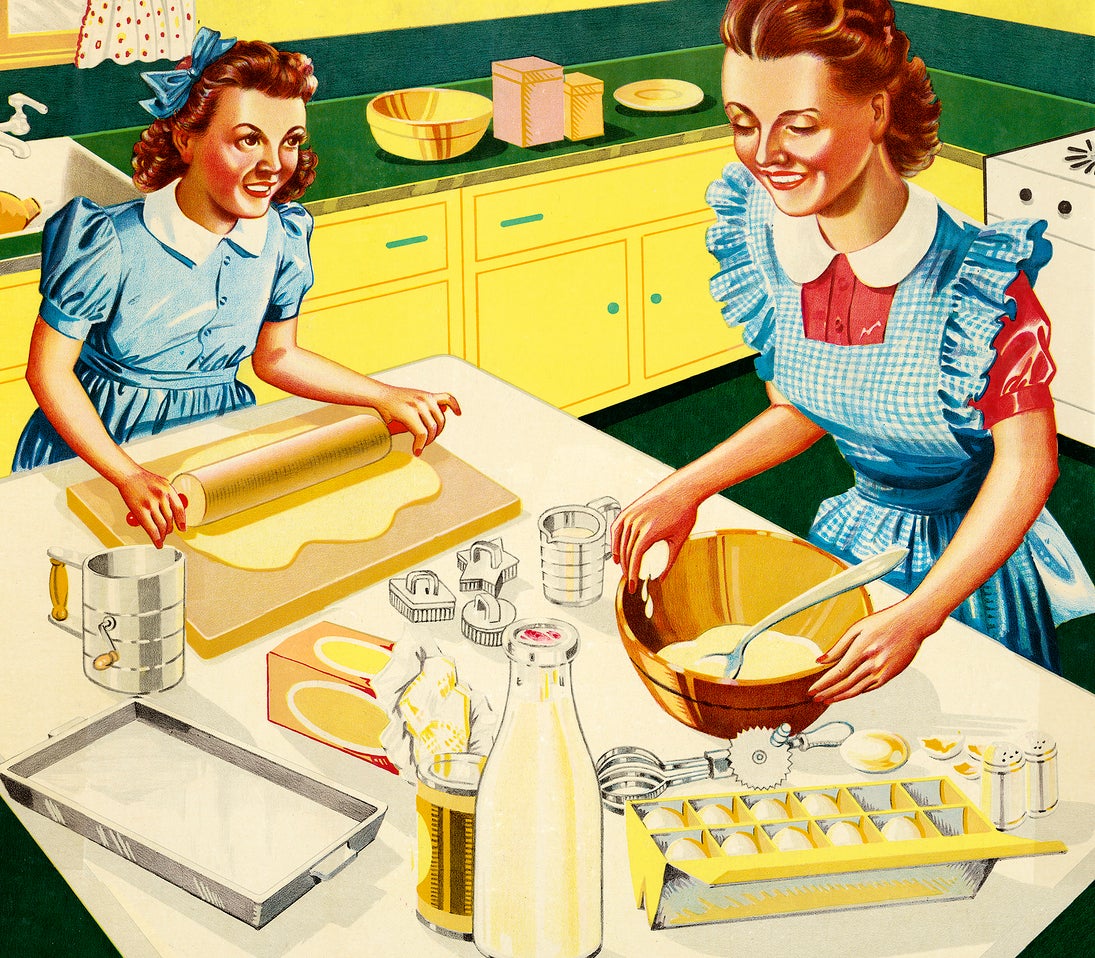
Mother’s Day, for many of us, is a time of pink cards, burnt toast in bed and hopeful flowers from a petrol station. But for chefs, whose careers often orbit food and family in equal measure, the day takes on a different depth. It’s not so much about flowers as it is about legacy – culinary or otherwise. And when your mum drops in for dinner service, it’s not just a casual visit but more a full-blown state occasion: kitchens are scrubbed spotless, dishes fussed over, seasoning double-checked. This is funny, really, considering many of these women once tried to talk their children out of becoming chefs altogether.
Before they were plating up lobster under parmesan mash or chasing Michelin stars with a single-origin espresso, some of the country’s best chefs were peeling potatoes in the family kitchen, dodging pressure-cooked spinach fumes and being fed steaming bowls of chickpea curry.
Richard Corrigan, the Irish stalwart behind Corrigan’s Mayfair and Bentley’s, was put to work as his mum’s sous chef long before he could spell “mise en place”. “I started cooking from a very young age, peeling spuds to start with of course,” he says. “My mum is the biggest influence on everything I’ve done since – all the success I’ve had in my career, traces back to her.”
Andy Beynon, of Behind in Hackney, remembers an Italian mother who not only kept the household running but also worked as a private chef for families in Mayfair. “Because of this, she was aware of the long hours that went into cooking and tried to talk me out of it,” and, obviously, failed, “but was supportive in the end,” he says. At home, it was his mum who kept everyone fed – “my dad couldn’t even cook an egg”.
Then there’s Sat Bains, who didn’t so much follow his mother into food as escape into it. The family business was retail; the kitchen became his refuge. “Cooking was more of an escape from working in dad’s shops,” he says. “The expectation was always that I’d go into the family business, but cooking had other plans for me.” His mother was hesitant at first – “it was my sister Manjit who convinced her to let me go down this path”.
Aji Akokomi, founder of Akoko, spent his childhood in his mother’s bakery in Ibadan, Nigeria. “Growing up working in her bakery... I was immersed in food and hospitality from an early age,” he says. “Watching her run the bakery and prepare meals for the family made me fall in love with the idea of sharing food with others.”
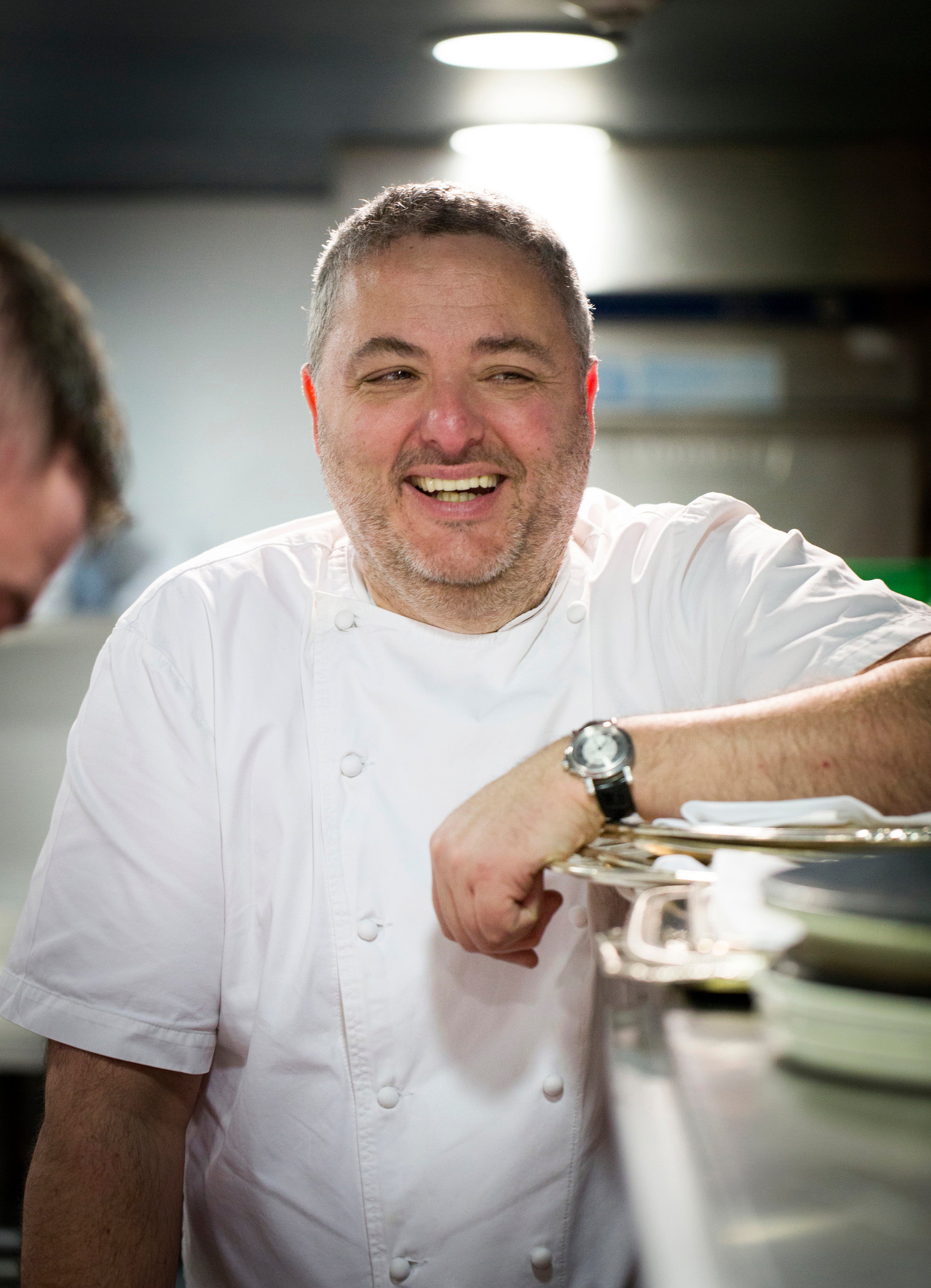
Meanwhile, Amy Poon, daughter of legendary restaurateurs Bill and Cecilia Poon, saw firsthand how demanding and thankless the industry could be. “The saying that ‘behind every great man is a woman’ rings loud and true when I consider what my mother had to navigate,” she says. While her dad was the culinary star, her mother did everything else behind the scenes. “She ran the business, managed the household, looked after my brother and me and tended to all my father’s needs … In many ways, maybe my mother was the better chef – she had to cook and satisfy my father’s exacting culinary standards.”
Growing up, while some children are taken to museums and galleries, Poon and her brother were taken to restaurants. “Growing up in a restaurant and seeing first-hand the incredibly hard work and long hours and sacrifices it took, I swore I’d never go into the restaurant business.” Naturally, she did exactly that. “My mother thinks I’m mad!”
What these chefs inherited from their mothers isn’t always a specific recipe or technique. For Corrigan, “I got my generosity of spirit from my mother, no doubt about it”. A spirit rooted in his mother’s Connemara upbringing, where “people are generous to a fault”, he says. “One kitchen skill of hers that’s stayed with me to this day is her brown bread recipe. She made it fresh every single day, and let me tell you, the smell of that bread baking filled the house with pure magic.”
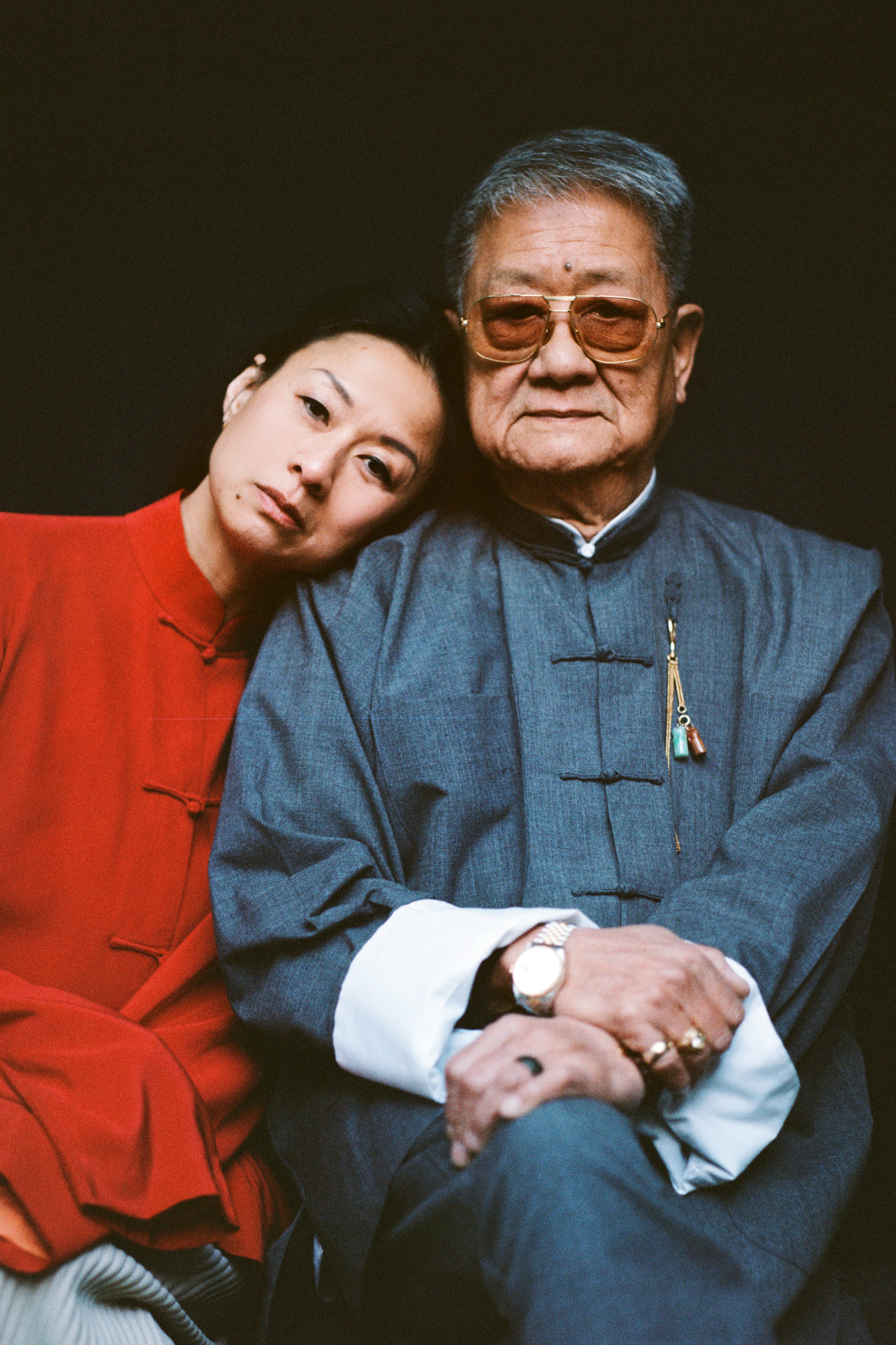
Beynon credits his mum for his meticulous mise en place. “She was a very busy lady and cooking for many people, including her family,” he says. “She worked long hours but was always prepared and organised, which is something I’ve adopted in the way I work.” She also taught him the creative value of a good ragu. “My mum is Italian and from her, I learnt that you can turn almost anything into a meal if you add Bolognese or meat ragu, be it toast, a jacket potato, anything!”
Bains describes a kind of evolution. “Mum wasn’t a great cook at first – with four kids and her full-time job, meals were more about getting food on the table than any real passion for cooking,” he says. “But when we all left home, something amazing happened. With more time on her hands, she rediscovered cooking – and suddenly there was this new ingredient in her food: love.” It taught him that great food isn’t just about skill – it’s about having the time to care.
Poon’s inheritance wasn’t a single dish, but an ethos. “Look after your staff and your staff will look after you,” her mother would say. Poon remembers watching her mum manage the restaurant with compassion and quiet authority, keeping staff for over 30 years. “I spent a lot of time at the restaurant and saw how she treated people. I learnt to speak to strangers.” Her mum taught her to be answerable to herself, and to constantly ask: “Does this decision allow me to go to bed with a clear conscience?” That, and “buy the best bed and shoes you can afford because if you’re not in one, you’re in the other!”
Akokomi echoes the importance of heritage. “My mum always emphasised the importance of honouring traditional cooking methods and recipes,” he says. “Food is more than just sustenance – it’s a connection to our roots and heritage. That lesson has stayed with me, guiding the way I cook and appreciate food today.”
Now that they’re older – and, in some cases, parents themselves – these chefs have found new meaning in Mother’s Day. Beynon finds himself reaching out more, understanding more. “As I get older, I understand her more and try to help in whichever way I can,” he says. “I think it’s important to look after your mum and to treat her, even if it’s something simple like going out for a meal together.” Eliot’s in London Fields is a favourite: unfussy, ingredient-led and a favourite of hers.
Corrigan sees the day as a moment to pause and appreciate. “Growing up, my mother had a huge influence on my cooking, from her simple tasty dishes to the way she brought people together around the table. As a parent myself, I now see it through a different lens,” he says. “Mother’s Day means a lot to me. It’s about celebrating the hard work and love that goes into being a mother.” And an opportunity for a good meal.
Akokomi agrees: “It is a time to honour my mother’s support and the values she instilled in me. As a father now, I have an even greater appreciation and understanding for all that mothers do for their children, which I also see in my wife, Remi.”

Bains marks the day through food, always. “These days it’s not about grand gestures – just cooking together at home with my mum and sister. That time means everything,” he says. This Mother’s Day, he’ll be making what they all love: “aubergine parmigiana, potato wedges with oregano and proper strawberry ice cream. Nothing complicated, just real food that allows us to focus on being together.”
Poon, ever the contrarian, has no time for breakfast in bed. “My children are old enough now not to be offended by my saying, ‘I really, really dislike breakfast in bed!’ I don’t care if it’s served on silver and Frette linen but I find it slovenly and uncomfortable and I hate the idea of crumbs.” Also, why celebrate on one day when you could celebrate on 364 instead? “I feel the same about mothers and being a woman. We should be celebrating every day.”
But since returning to the UK after years abroad, she’s more attuned to celebrating her own mother. “Ironically, when you become a mother and have your kids celebrating you on Mother’s Day, granny is sometimes forgotten.”
Ask any of them about their most memorable meal from mum, and the answers are as varied as the chefs themselves. Corrigan swears by collar of bacon with summer cabbage and mustard. “It’s just as good cold the next day with a baked potato and a bit of salad. That dish takes me right back to my childhood, pure comfort on a plate.”
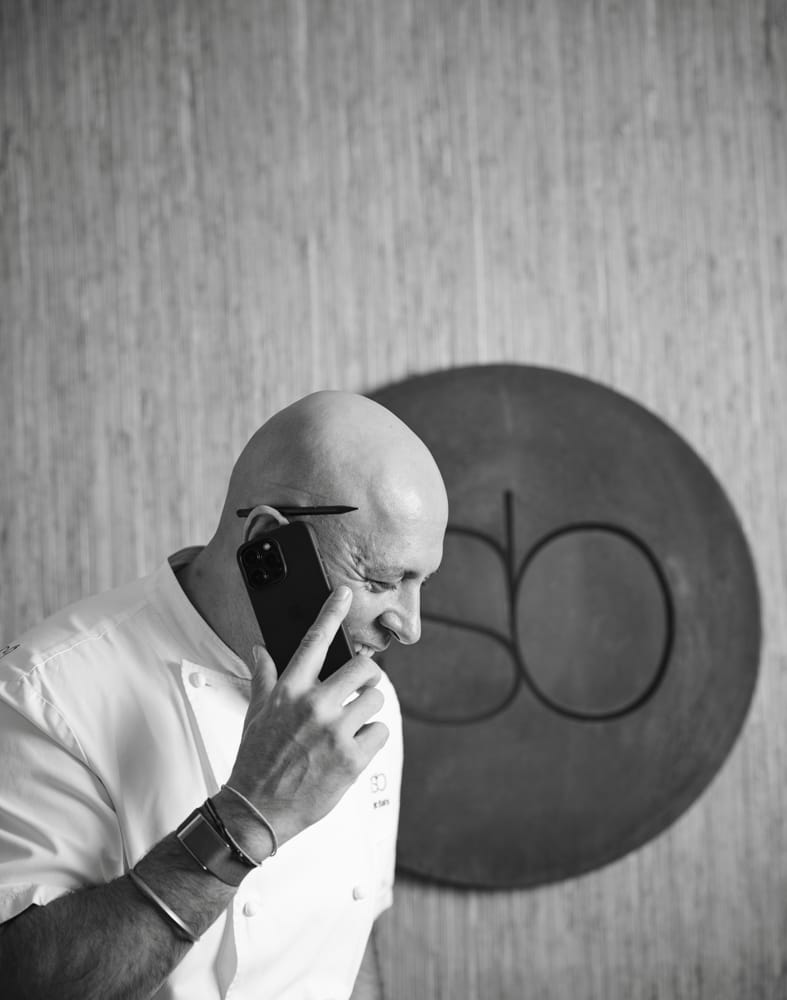
Beynon is quick to name-drop his Italian roots. “Classic Italian tortellini in chicken stock with chilli and lots of aged parmesan. It’s such a well-balanced classic and always hits the spot.” But, as any chef knows, it’s not always plain sailing in the kitchen. At Christmas, his mum “would always make this cabbage with lots of sugar, spice and wine, stewing it in the oven. One year she forgot to turn the oven off and the cabbage turned black overnight!”
Bains has a similar memory, remembering his mother’s pressure-cooked spinach – less fondly, at first. “That smell travelled halfway down the street – it clung to our clothes so badly we dreaded school the next day,” he says. “But over time, even that smell became comforting. It transformed into something special through nostalgia – that smell of home – and eventually became one of my favourite dishes when I was older.”
For Akokomi, the most memorable dish is his mum’s honey bean stew. “It was just right, and it is one of my son’s favourites too,” he says. “Every bite is packed with flavour and nostalgia.” As for the worst? “There were no disasters, but I do remember a time she tried to experiment with a new stew recipe… let’s just say it didn’t quite turn out as planned.”
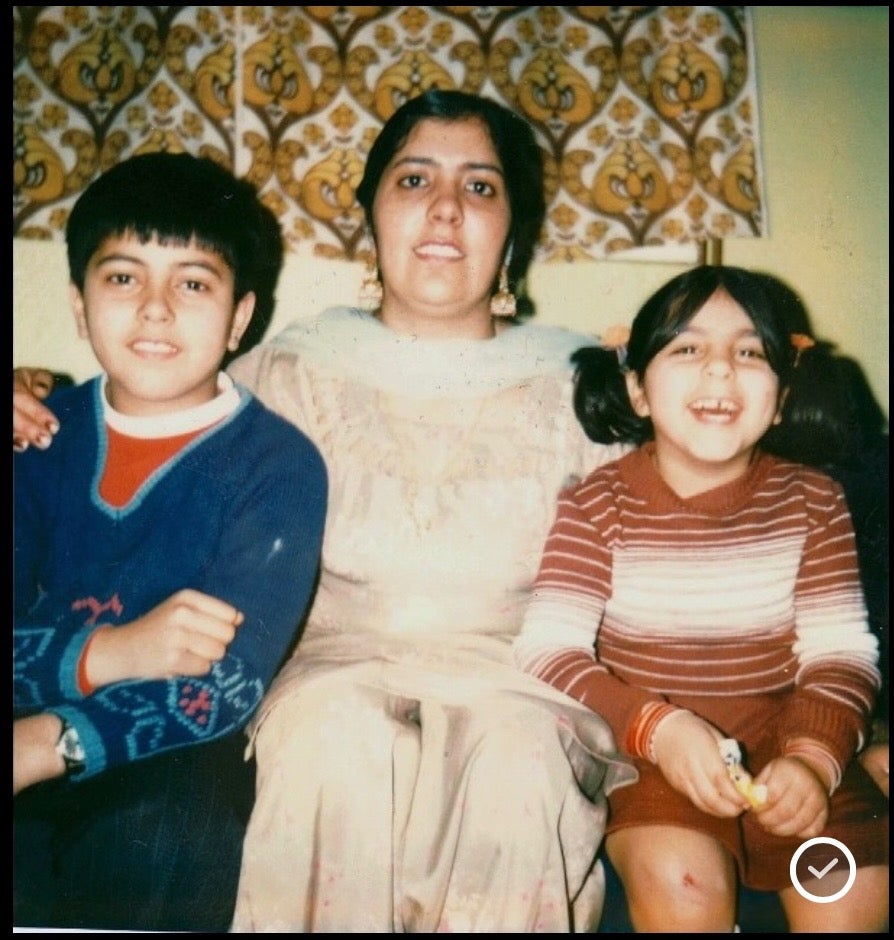
Poon talks not of dishes but of broths. Chinese tonic soups, brewed with medicinal precision, were her mother’s way of saying, “I’ve noticed you are tired/stressed/pale/etc and need some support/care/energy/TLC. I’m looking after you…” Each pot was tailored to a need: more energy, less stress, better sleep. A quiet language of nourishment. “In most Chinese households, food is an expression of love and Chinese tonic soups are probably the purest, deepest expression of this love.”
Mothers may not always be the ones with stars to their name or menus in their honour. But to these chefs, their cooking – and their care – lingers in every stock base, every simmering pot, every last bite. Michelin may award the stars. But mums, it turns out, make the real magic.
Richard Corrigan’s soda bread
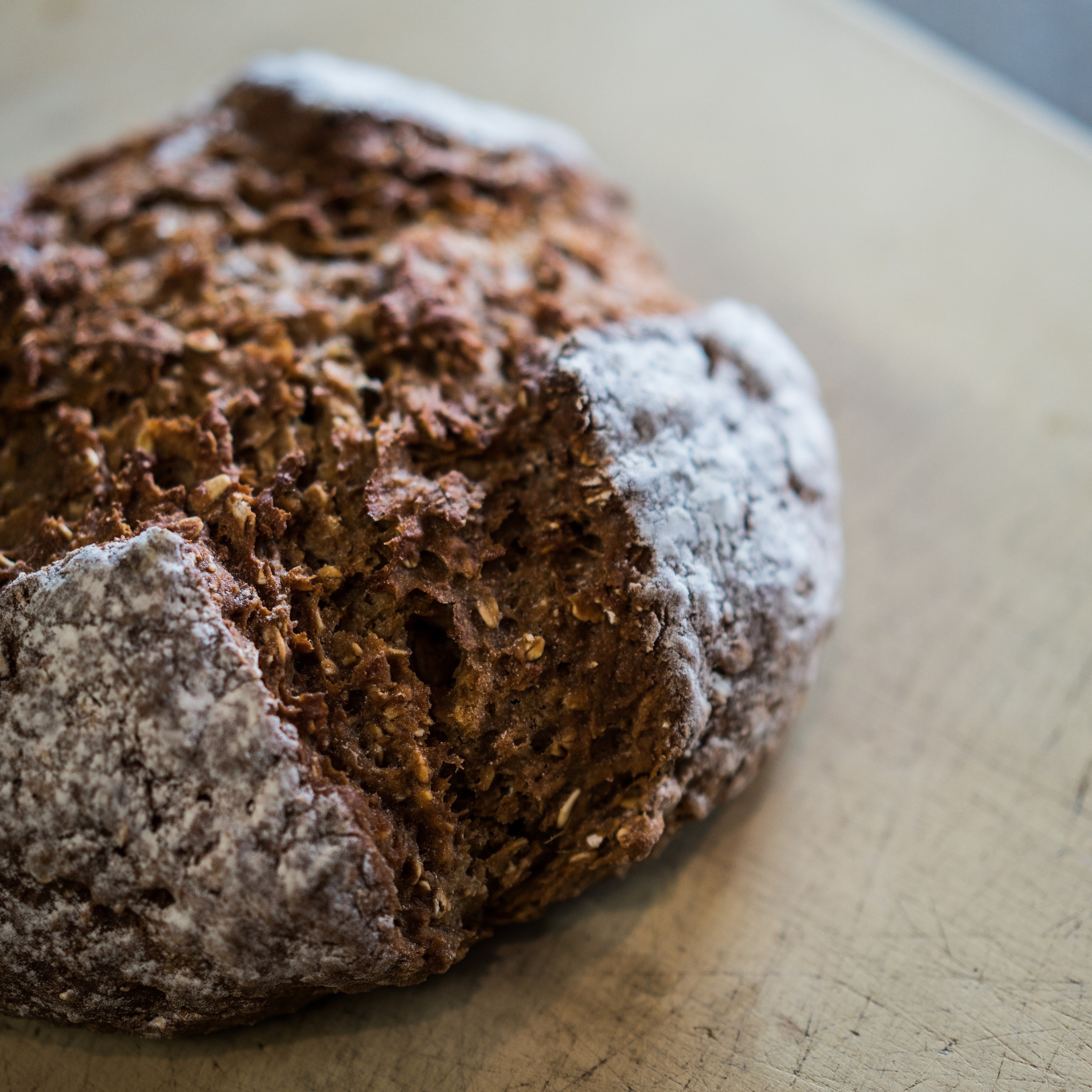
Forget the foie gras – Corrigan’s ride-or-die is warm soda bread, just out of the oven and slathered in butter. His mum made it daily, never touching the dough with her fingers, always with a magician’s touch. It’s simple, crusty, comforting – and he could live off it.
Makes: one large loaf
Ingredients:
250g plain flour
10g salt
15g sodium bicarbonate
150g wholemeal flour
150g jumbo oat flakes
1 tbsp clear honey
1 tbsp black treacle
500ml buttermilk
Method:
1. Preheat the oven to 200C and line a baking sheet with greaseproof paper.
2. Combine all of the dry ingredients together in a bowl. Make a well in the centre, then mix in the honey, treacle and buttermilk, working everything together lightly with your hands until you have a loose, wet dough.
3. Flour your hands and shape the dough into a round and lift it onto the lined baking sheet. Cut a cross in the top (as the loaf cooks this will help to separate it into quarters).
4. Transfer to the oven and bake for about 45 minutes or until the loaf sounds hollow when you tap the base with your knuckles.
5. Transfer a wire rack, cover with a damp cloth and leave to cool. Don’t even think of putting dairy spread on it. This bread needs and deserves butter.
Momma Bains’ chickpea curry
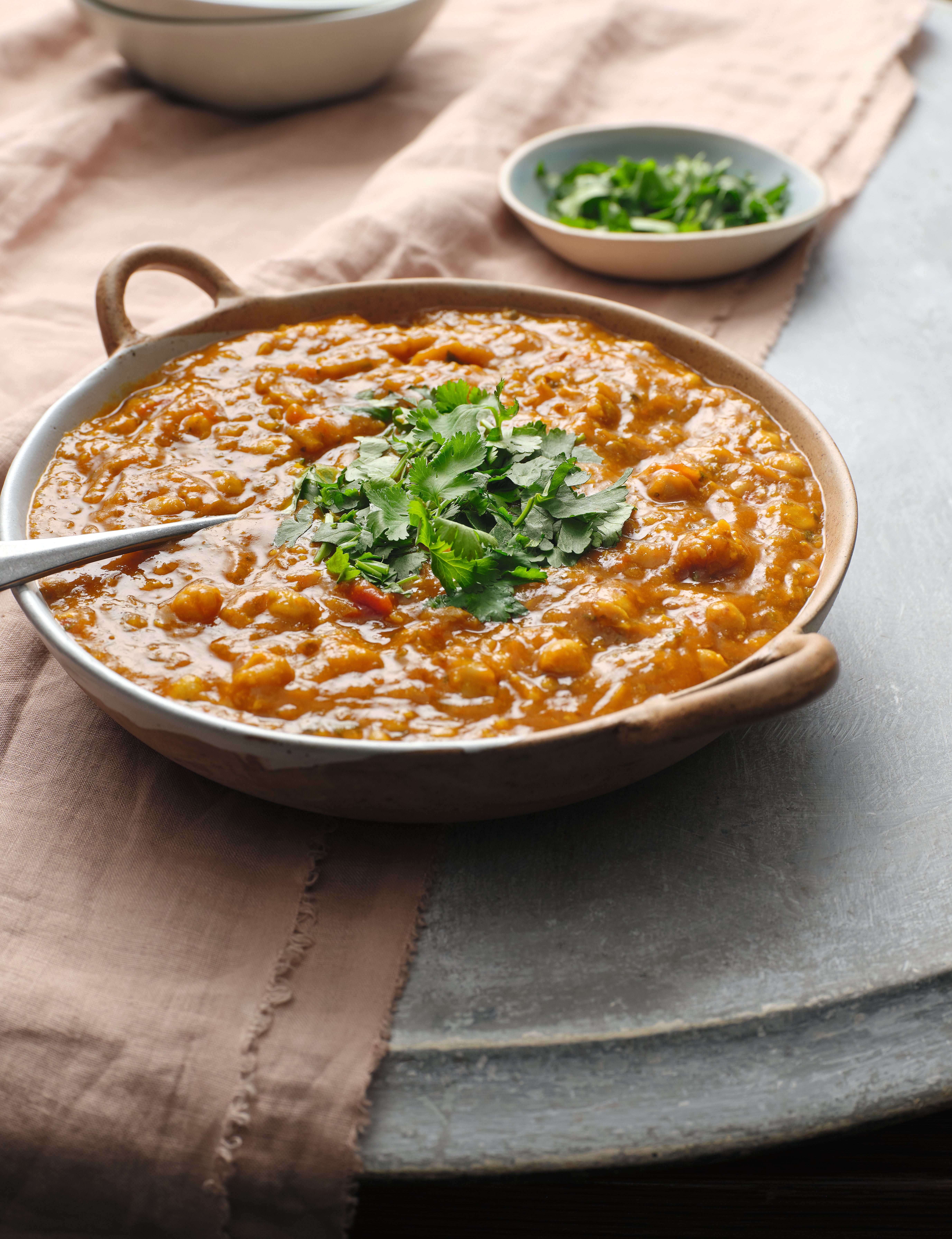
The smell of home and the soul of weekday dinners. Bains grew up on these veg-packed staples – one gently spiced, the other hearty and rich. Best served reheated, when the flavours deepen and the edges crisp. Born from instinct, perfected through practice – and now part of the Momma Bains legacy.
Serves: 2
Ingredients:
30ml extra virgin olive oil
2 shallots, finely diced
15g grated garlic
1 tbsp toasted cumin seeds
200g tinned chopped tomatoes
15g grated ginger
1 green chilli, sliced
1 tsp ground turmeric
200g tinned chickpeas, drained
200ml water
20g fresh coriander, chopped
Flaked sea salt, to taste
Method:
1. Place a saucepan on a medium heat and add the olive oil. When hot, add the shallots, garlic and cumin seeds and cook until the veg is slightly golden, around 20 minutes.
2. Add the tomatoes and bring to a simmer, then add the ginger, chilli and turmeric. Carry on cooking until the oil splits out and the mixture takes on a purée texture. Add the chickpeas and bring to a simmer. Pour in the water, bring back to a simmer and cook for 30 minutes. Remove from the heat, then add the coriander and season with salt.
Aji Akokomi’s jollof rice
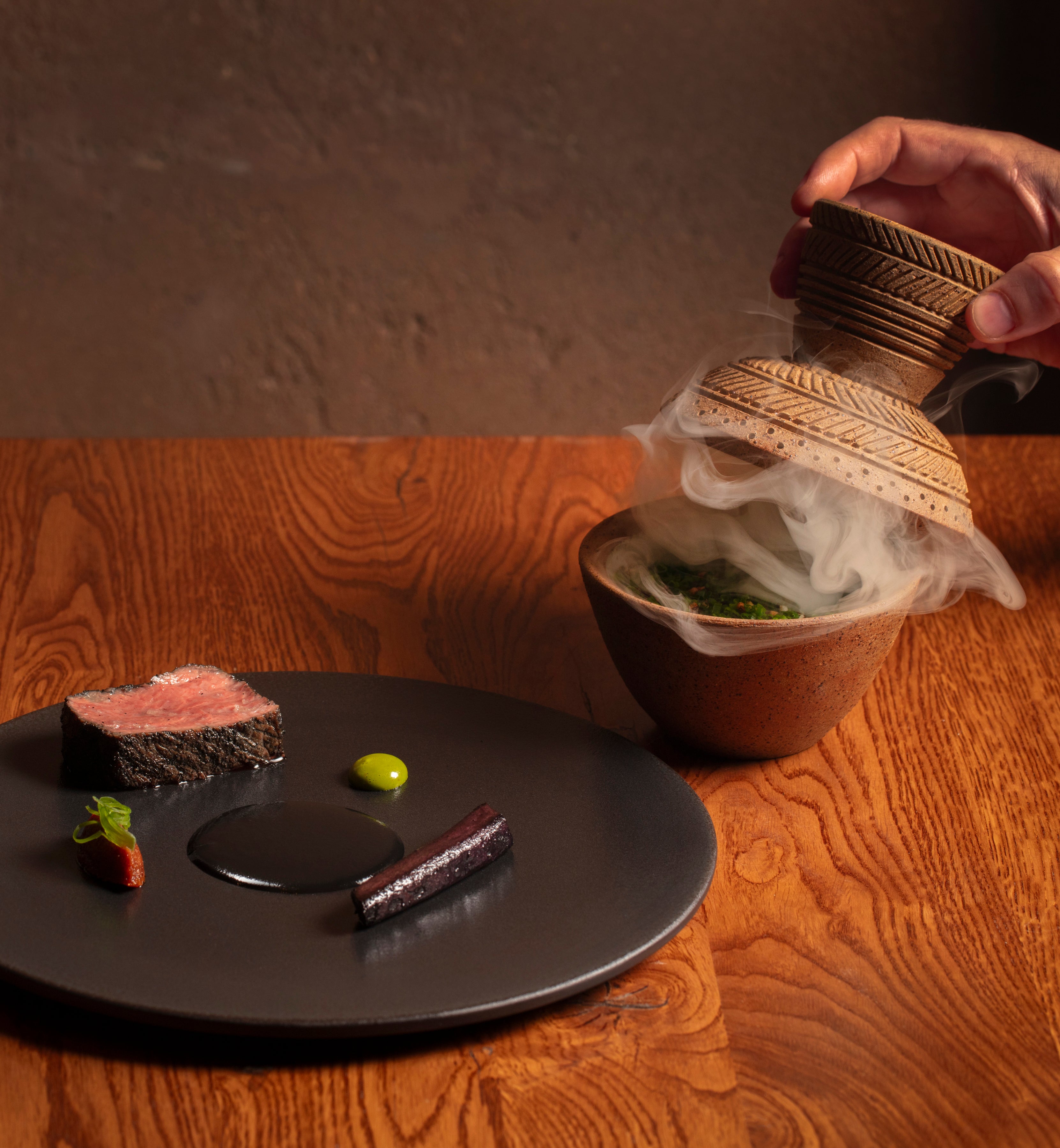
Serves: 4-6
Ingredients:
For the Jollof Ata Base:
50g yellow onion (finely sliced)
10g scotch bonnet baste
100g plum tomatoes
275g red peppers (deseeded)
For the jollof rice:
200g Tilda golden basmati rice
30g tomato paste
120g red onion (finely sliced)
10g garlic paste
10g ginger paste
5g white peppercorn (ground)
3g thyme
3g curry powder
3 bay leaves
10g unsalted butter
70g grapeseed oil (or any neutral oil)
400g chicken stock
10g fine salt
Reserved jollof ata base
Method:
For the Jollof ata base:
1. Transfer red pepper, plum tomatoes, scotch bonnet and onion to a blender or food processor, and puree until completely smooth.
2. Pour into a wide saucepan and bring to medium simmer and allow to cook and reduce until thick paste.
For the rollof rice:
1. Heat the oil in a wide saucepan and add onions with salt.
2. Sweat the onions on low heat for about 10-15 minutes until soft and translucent.
3. Turn up the heat to medium and add the ginger garlic paste with white peppercorns, curry powder, and allow to cook out for 5 minutes.
4. Add tomato paste and the jollof ata base and stir very well and cook for another 5 minutes on low heat.
5. Add the chicken stock and bay leaves and stir well and allow to cook for another 5-10 minutes on low heat.
6. Finally add the rice and stir well, cover with lid to steam for 10-15 minutes on low heat.
7. Open the lid and stir gently, add the butter, and cover again and cook on low heat for 10 minutes.
8. Remove from heat and allow to rest for 10 minutes.
Andy Beynon’s tiramisu
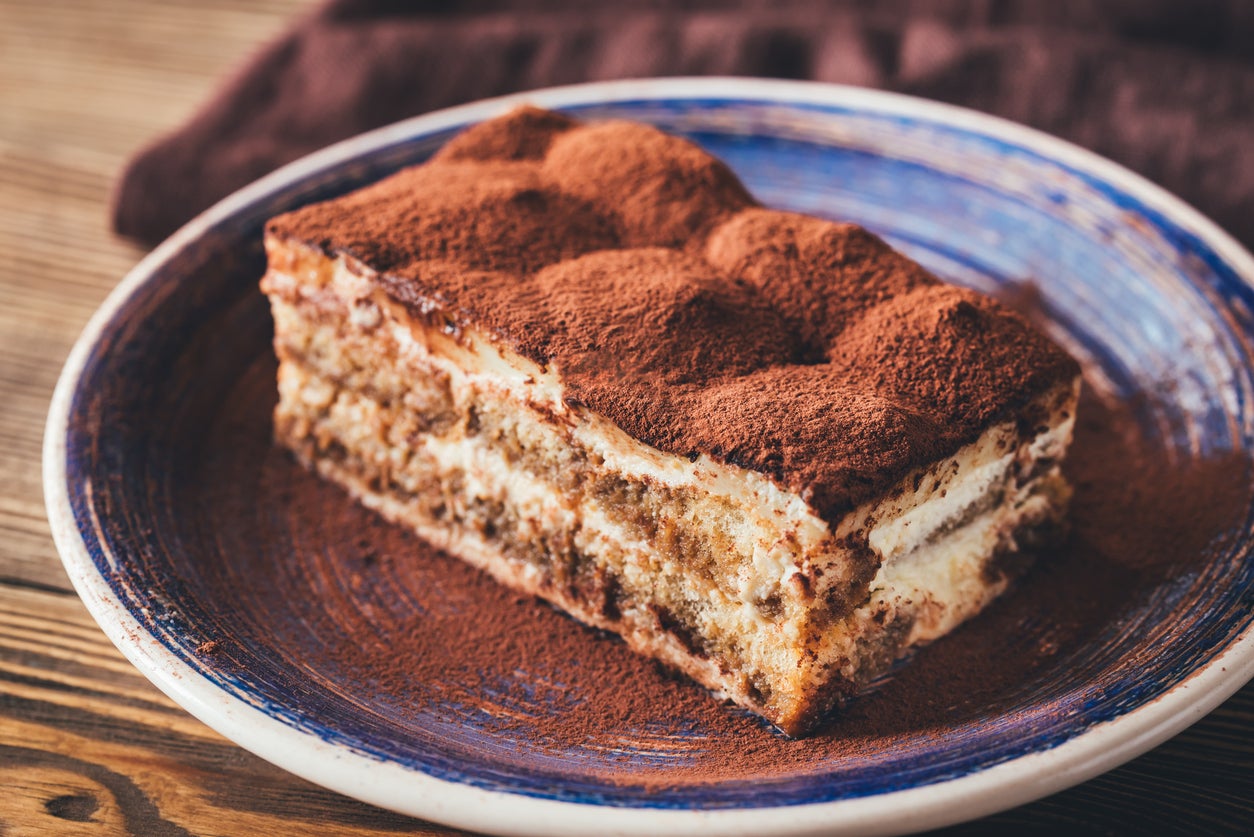
Classic, creamy, and always in surplus. Beynon’s mum makes a tiramisu so good it still draws him home – and she never quite nails the portion size, which suits him fine. Light sponge, boozy coffee, too much mascarpone – and always a Tupperware to take away.
“My mum is Italian, so she doesn’t really weigh anything out – it’s all instinct,” Andy says. “This is the version passed down from my nonna, with a couple of modern tweaks from me, like the sea salt.”
Serves: 6-8
Time: 30 mins, plus chilling overnight
Ingredients:
6 egg yolks
6 egg whites
12 tbsp caster sugar (2 tbsp per egg yolk)
500g full-fat mascarpone
300ml strong espresso or very strong coffee
2–3 tbsp sugar (for the coffee)
200–250g savoiardi (ladyfinger) biscuits
Cocoa powder, for dusting
Zest of 1 orange
Flaky sea salt, to finish
Method:
1. Sweeten the coffee: in a shallow bowl, stir 2–3 tbsps of sugar into the warm espresso until dissolved. Set aside to cool.
2. Make the mascarpone mixture: in a large bowl, whisk the egg yolks with 12 tbsps of sugar until pale and thick. Gently fold in the mascarpone until smooth.
3. Whip the egg whites: in a separate bowl, whisk the egg whites until they form soft peaks. Fold them gently into the mascarpone mixture in two additions, keeping the mixture light and airy.
4. Assemble the tiramisu: dip each ladyfinger briefly into the sweetened coffee – don’t let them get soggy. Arrange a layer in the base of a deep dish or trifle bowl. Spoon over a third of the mascarpone mixture. Repeat for three layers, finishing with a layer of mascarpone.
5. Finish and chill: dust generously with cocoa powder, then grate over orange zest and sprinkle with a pinch of flaky sea salt. Cover and chill overnight before serving.






Join our commenting forum
Join thought-provoking conversations, follow other Independent readers and see their replies
Comments